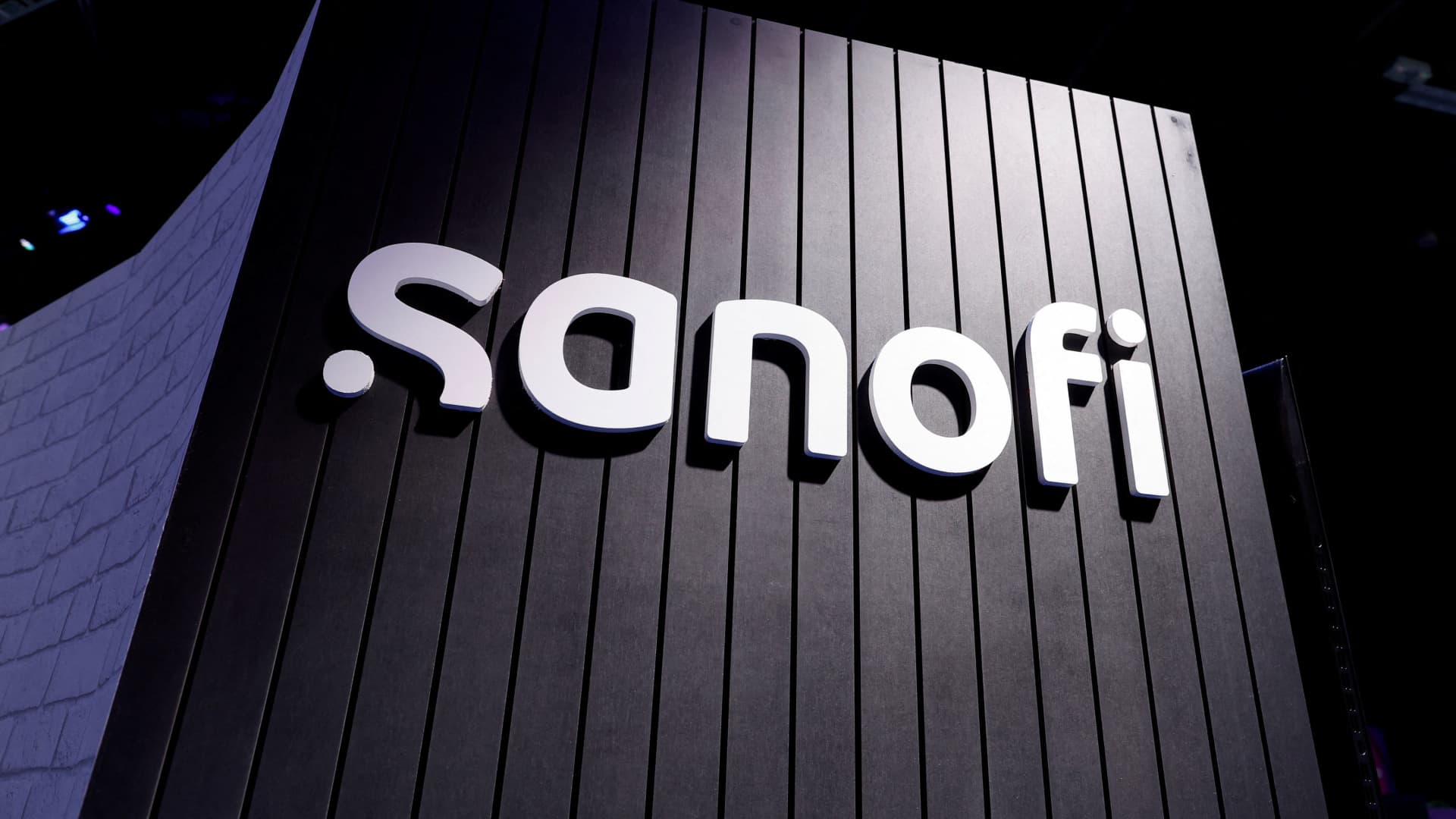
- Shares of drugmakers Sanofi and Regeneron both jumped more than 6% after they released data on a jointly developed drug that shows promise in treating COPD.
- The drug is already approved for asthma and some skin conditions, such as eczema, but it could become the first new treatment in over a decade for COPD.
- The results are a win for Dupixent, as competing COPD drugs from drugmakers such as AstraZeneca and GSK struggle to make successful strides toward approval.

Shares of Sanofi and Regeneron both jumped by more than 6% on Thursday after the pharmaceutical companies released promising data showing their jointly developed asthma drug Dupixent also shows promise in treating COPD patients.
New data from a phase three clinical trial shows Dupixent reduced bad bouts of chronic obstructive pulmonary disease, or COPD, by 30% compared with a placebo over 52 weeks. The drug is already approved for asthma and some skin conditions, such as eczema, but it could become the first new treatment in over a decade for COPD.
Get New England news, weather forecasts and entertainment stories to your inbox. Sign up for NECN newsletters.
COPD is a life-threatening respiratory disease that causes progressive lung function decline, with symptoms such as persistent cough and breathlessness that can hinder an individual's ability to do daily activities. It caused 3.2 million deaths globally in 2019, making it the third leading cause of death, according to the World Health Organization. Smoking is a key risk factor for COPD, but people who quit smoking can also develop the disease.
The trial enrolled COPD patients with type 2 inflammation — an allergic response that can result in decreased lung function. Roughly 300,000 people in the U.S. alone live with COPD with type 2 inflammation, according to Regeneron.
The more than 900 participants in the trial were current or former smokers, and those who received Dupixent showed improvements in lung function, quality of life and respiratory symptoms. Those results are a win for Dupixent, as competing COPD drugs from drugmakers such as AstraZeneca and GSK struggle to make successful strides toward approval.
Money Report
"Change cannot come quick enough for people living with uncontrolled COPD but, unfortunately, many investigational treatments have failed to demonstrate significant clinical outcomes leaving these vulnerable patients with limited treatment options," said Dr. Dietmar Berger, Sanofi's chief medical officer, in a company press release. "We are excited to share these unprecedented and potentially paradigm-shifting clinical results, which may give new hope to patients, caregivers and physicians."
The companies said a second phase three trial of Dupixent in COPD is ongoing, with data expected in 2024.
J.P. Morgan analyst Chris Schott said Dupixent's latest results exceeded expectations.
"This benefit suggests a clear clinically meaningful benefit for Dupixent and should support broad usage for the asset in this segment of the COPD market," Schott wrote in a research note to clients Thursday. He added that J.P. Morgan expects to see new COPD patients adding $1.5 billion to $2 billion in new sales for Dupixent.
Dupixent raked in sales of $8.7 billion last year for Regeneron, which was a 40% increase from 2021.
Cowen analyst Steve Scala gave a similar take on the new data, noting that COPD represents a major market opportunity for the drug.
"We expect solid uptake for Dupixent once approved," he wrote in a note Thursday, adding that "we are strongly encouraged by positive data in COPD which could become a blockbuster opportunity for Dupixent and extend its growth trajectory through 2030+."






